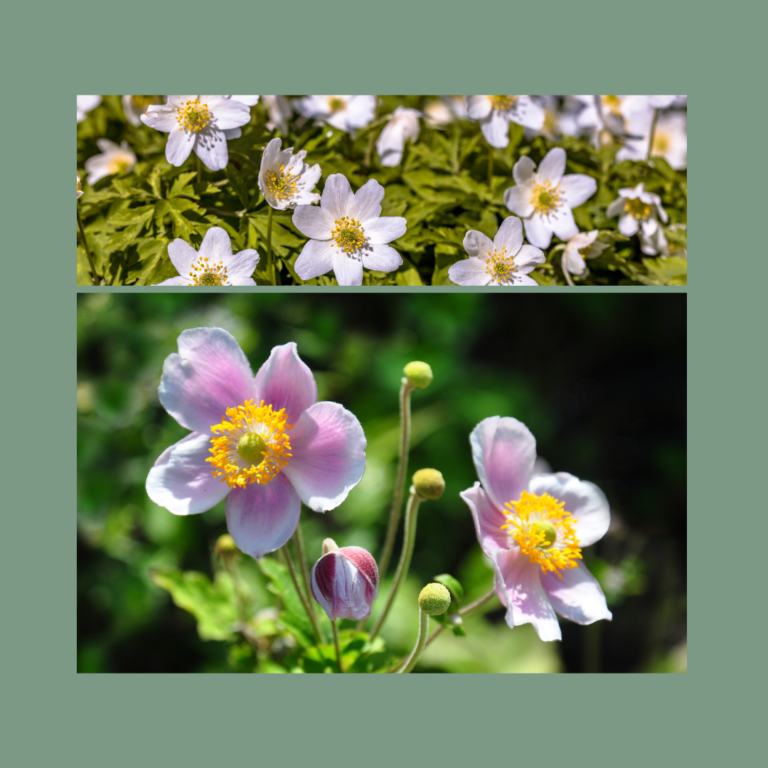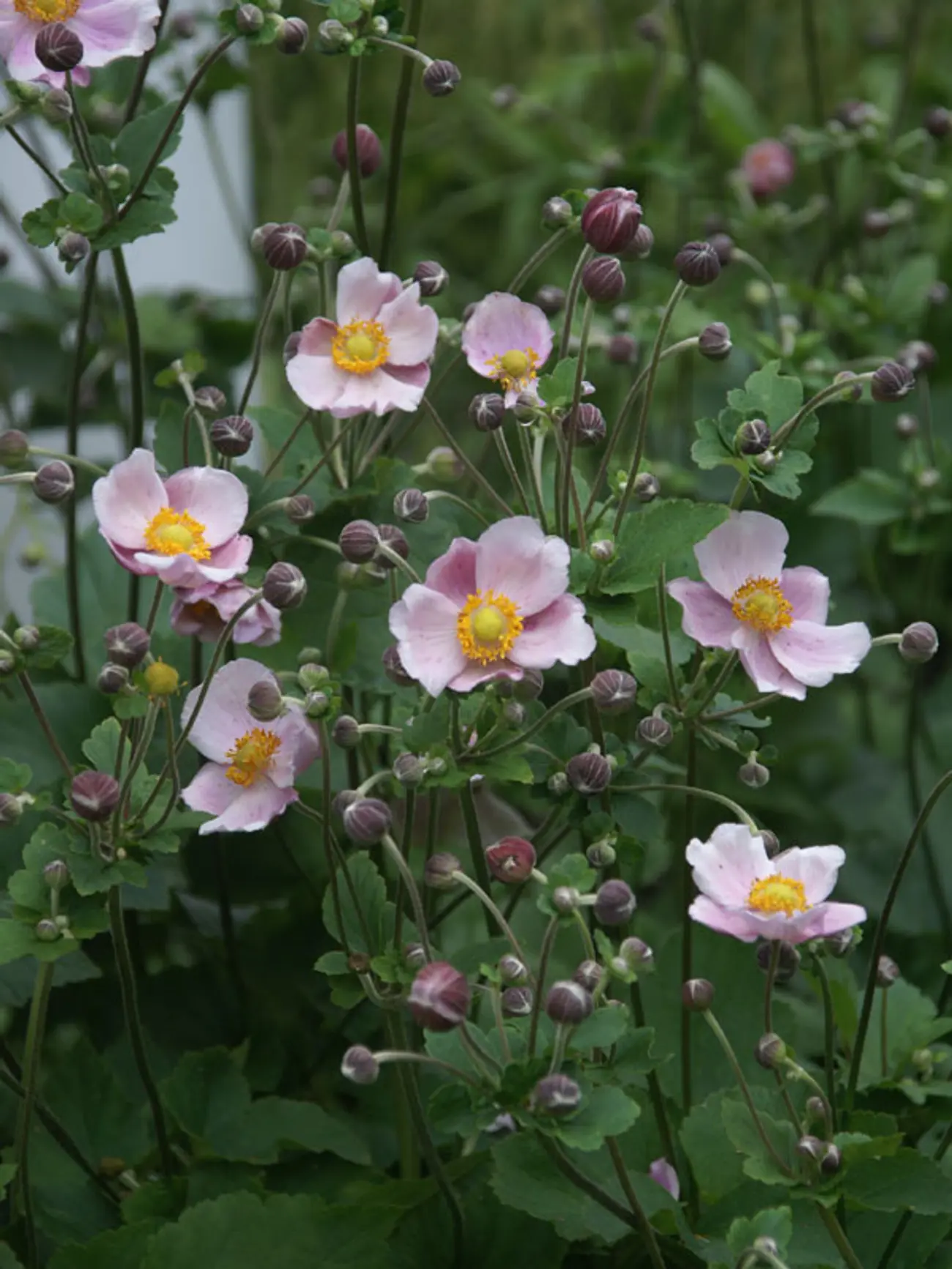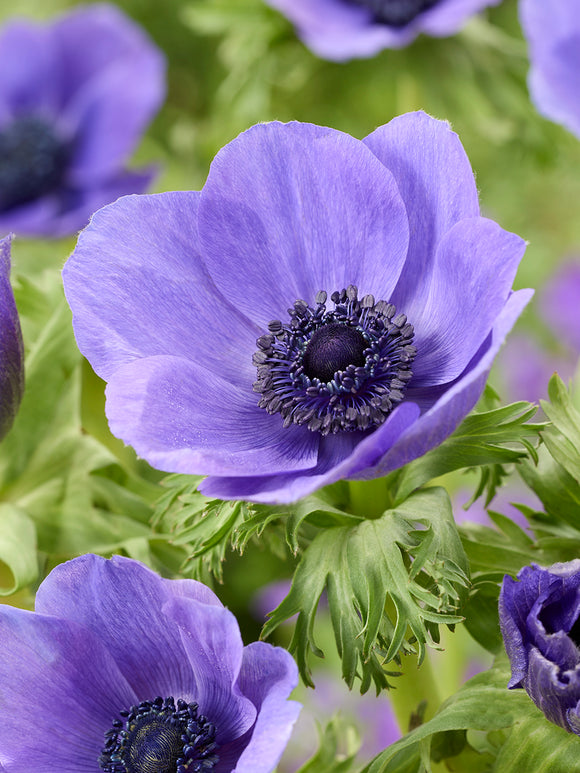
ANEMONE.
Image Credit: Bluestone Perennials
Anemone Robustissima
Japanese Anemone, Windflower

Galilee Blue
ANEMONE.
“The origin of the Anemone, according to Ovid, is to be found in the death of Adonis, the favourite of Venus. Desperately wounded by a boar to which he had given chase, the ill-fated youth lay expiring on the blood-stained grass, when he was found by Venus, who, overcome with grief, determined that her fallen lover should hereafter live as a flower.
The Greek poet, Bion, in his epitaph on Adonis, makes the Anemone the offspring of the tears of the sorrowing Venus.
Rapin, in his poem, gives a somewhat similar version of the origin of the Anemone. He says:—
In Wiffen’s translation of the Spanish poet Garcilaso, we find the red colour only of the Anemone attributed to the blood of Adonis:—
Rapin recounts another story, according to which the Anemone was originally a nymph beloved by Zephyr. This is, perhaps, an explanation of the name of the flower, which is derived from Anemos, the wind.
The English name of Wind-flower seems to have been given to the Anemone because some of the species flourish in open places exposed to the wind, before the blasts of which they shiver and tremble in the early Spring. Pliny asserts that the flower never blooms except when the winds blow.——With the Egyptians, the Anemone was the emblem of sickness. According to Pliny, the magicians and wise men in olden times were wont to attribute extraordinary powers to the plant, and ordained that everyone should gather the first Anemone he or she saw in the year, the while repeating, with due solemnity—“I gather thee for a remedy against disease.” The flower was then reverently wrapped in scarlet cloth, and kept undisturbed, unless the gatherer became indisposed, when it was tied either around the neck or arm of the patient. This superstition extended to England, as is shown by the following lines in a ballad:—
“The Anemone was held sacred to Venus, and the flower was highly esteemed by the Romans, who formed it into wreaths for the head.——In some countries, people have a strong prejudice against the flowers of the field Anemone: they believe the air to be so tainted by them, that those who inhale it often incur severe illness.
“Shakspeare has given to the Anemone the magical power of producing love. In ‘A Midsummer Night’s Dream’ (Act 2),
“Oberon bids Puck place an Anemone-flower on the eyes of Titania, who, on her awakening, will then fall in love with the first object she sees.——
“A once famed Parisian florist, named Bachelier, having procured some rare Anemones from the East, would not part with a root, either for love or money. For ten years he contrived to keep the treasures to himself, until a wily senator paid him a visit, and, walking round the garden, observed that the cherished Anemones were in seed. Letting his robe fall upon the plants as if by accident, he so swept off a number of the little feathery seeds, which his servant, following close upon his heels, brushed off his master’s robe and secretly appropriated; and before long the niggardly florist had the mortification of seeing his highly-prized “strain” in the possession of his neighbours and rivals.——
“The Anemone is held to be under the dominion of Mars.” Folkard Plant Lore
Discover more from Jacki Kellum
Subscribe to get the latest posts sent to your email.